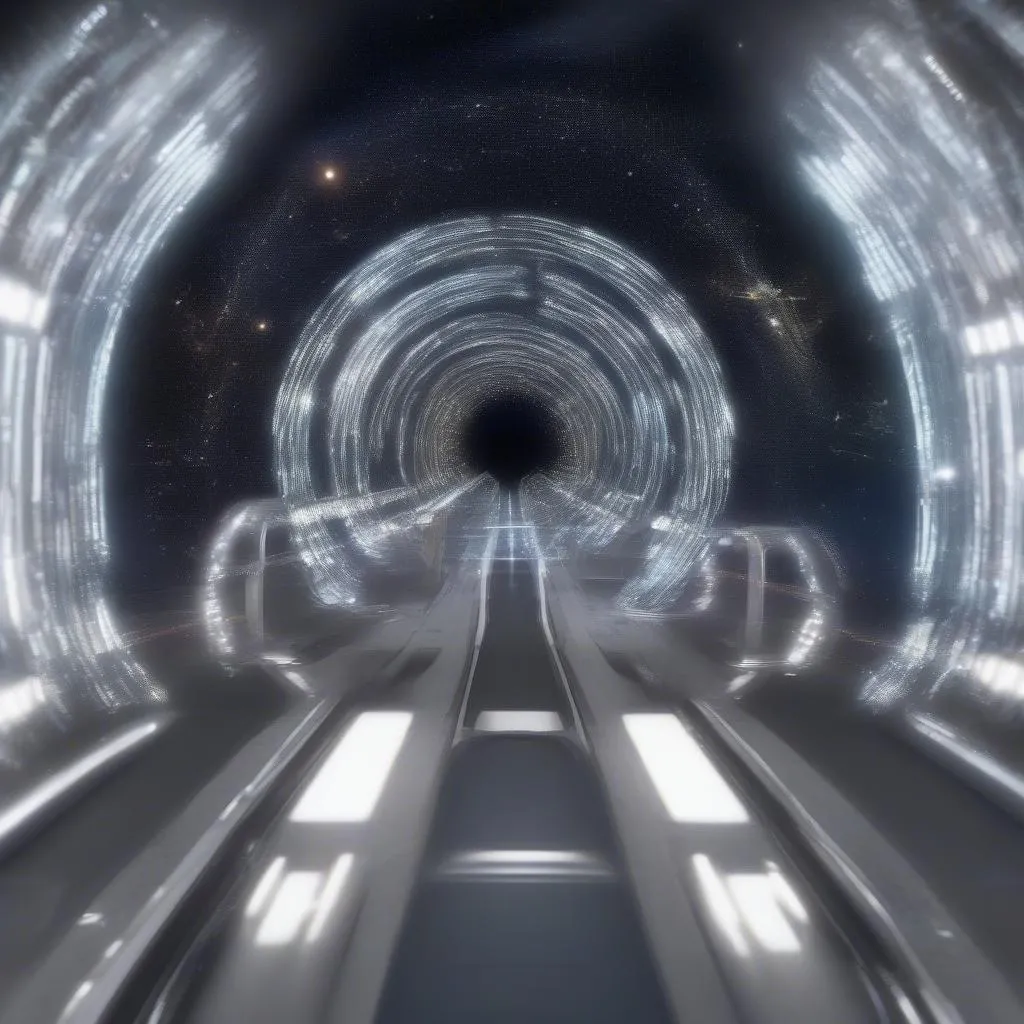Have you ever gazed at the night sky, stars twinkling like celestial fireflies, and wondered about the vast distances separating us from those distant suns? What if we could traverse those unimaginable expanses, voyaging to distant galaxies with the same ease we hop on a plane to visit a neighboring city? The possibility of light speed travel, the ultimate dream of science fiction, has captivated humanity for decades. But how close are we to turning this dream into reality?
The Cosmic Speed Limit: Understanding Light Speed
Before we dive into the possibilities, let’s ground ourselves in a bit of physics. Light travels at an astounding speed of approximately 299,792,458 meters per second (about 671 million miles per hour). This isn’t just a random number; it’s a fundamental constant in our universe, a cosmic speed limit dictated by the very fabric of spacetime.
According to Einstein’s theory of relativity, as an object approaches the speed of light, its mass increases infinitely, and time slows down relative to a stationary observer. To reach the speed of light, an object would require an infinite amount of energy, which, according to our current understanding of physics, is impossible.
Could We Break the Barrier? Exploring Theoretical Loopholes
While reaching the speed of light for a massive object seems implausible with our current technological capabilities, physicists have proposed some fascinating theoretical workarounds.
1. Warp Drive: Bending the Fabric of Spacetime
Remember the iconic Starship Enterprise from Star Trek zipping through the galaxy? The warp drive, a staple of science fiction, proposes bending spacetime itself to create a sort of shortcut. Imagine folding a piece of paper – the distance between two points becomes shorter when you fold the paper, bringing them closer. Similarly, warp drive technology would theoretically warp spacetime to reduce the distance between two points, allowing a spacecraft to effectively travel faster than light without actually violating the cosmic speed limit.
 Warp Drive: Bending Spacetime
Warp Drive: Bending Spacetime
2. Wormholes: Tunneling Through Space and Time
Another intriguing concept is that of wormholes, theoretical tunnels connecting two different points in spacetime. While still firmly in the realm of theoretical physics, wormholes offer a tantalizing possibility – a cosmic shortcut that could potentially allow us to travel vast distances instantaneously. Imagine stepping into a wormhole in London and stepping out moments later in Tokyo, having bypassed the need for a long-haul flight altogether!
 Wormhole: Tunneling Through Space and Time
Wormhole: Tunneling Through Space and Time
The Challenges and Possibilities Ahead
While light speed travel remains a distant dream, the human thirst for exploration continues to drive scientific inquiry. The pursuit of understanding the cosmos often leads to unexpected technological advancements, and who knows what breakthroughs await us in the future?
“The history of science is filled with examples of seemingly impossible ideas becoming reality,” notes Dr. Amelia Chandra, a theoretical physicist specializing in spacetime manipulation, in her book “Beyond the Horizon: Exploring the Frontiers of Spacetime.” “The key is to keep asking questions, challenging assumptions, and pushing the boundaries of our understanding.”
What Does This Mean for Our Travel Plans?
While we may not be booking our tickets to Alpha Centauri anytime soon, the quest for faster-than-light travel fuels our imagination and inspires us to explore the world around us with a renewed sense of wonder. Perhaps, while we wait for warp drives and wormholes to become a reality, we can focus on making our current modes of travel more sustainable and efficient. After all, even a journey to a nearby city can feel like an adventure if we approach it with an open mind and a thirst for discovery.